Portrait of the Artist: John Willenbecher
The idea for John Willenbecher’s latest show germinated four years ago, when the gallerist Craig F. Starr was at the Los Angeles County Museum of Art — the LACMA — and saw a piece of his from the ’60s. Starr was walking the galleries with a curator who, as it turned out, knew Willenbecher and connected them. The show has finally come into being, and it is really special: a room full of Willenbecher’s assemblages of found objects carefully arranged into what looks a game — but an entirely imaginary one. They are graphic and symmetrical and bold and incredibly, satisfyingly perfect to see in person or on paper — I can’t get enough of them. The show is up until Jan. 15.
To back it up: Willenbecher came to New York after college at Brown to study at the Institute of Fine Arts at NYU and become an art historian, but before he could complete his thesis or get his master’s, he started playing with constructions. It seemed the art itself had called him. A 1961 show at MoMA titled “The Art of the Assemblage” cemented his notions and from there, he didn’t look back. That was more than almost 60 years ago, and he has practiced his craft — largely from his loft and studio in Tribeca above the Odeon — ever since.
The legendary art dealer Virginia Dwan first exhibited one of his boxes in a 1964 show in LA — called Boxes — that also unveiled Warhol’s Brillo boxes for the first time. Willenbecher would go on to other mediums — painting primarily — and his work would be collected by museums around the country (MoMA, Hirshhorn, Whitney, etc.). And so the boxes sat in storage in Tribeca, until Starr saw that one in LA and unearthed the whole lot.
“It’s hard to believe — these are from so long ago,” said Willenbecher. “But it’s kinda nice.”
He came to Tribeca in 1970 — following friends such as the artist Robert Indiana, who had taken up residence at 25 Coenties Slip, and recalled that in a recollection published here in 2015.
“To actually live in that part of Manhattan was very exotic indeed — and incidentally also quite illegal,” Willenbecher writes. “Bob once invited me for dinner with some other artists and when the sun went down he got up from the table and proceeded to pin blankets up over the windows. Light shining out from them could have alerted the police to the fact that someone was actually living in the building.”
Of course he was not alone among artists here on the westside and he has the stories to go with it — like the time he spotted a Keith Haring chalk drawing on a metal door on Canal and Church, but found it was too heavy to drag home. His apartment is an assemblage itself, filled with his art, friends’ art, and clever architectural constructions that create rooms and hiding spots and hallways. The building was coop-ed in 1980, but he didn’t have the cash to buy — as a result, he says, he’s become the sort of “artist mascot” of the building.
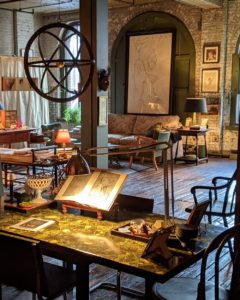 He’s never painted on canvas — “I never went to art school so I never learned to stretch one” — so he paints on paper, on boards and, like his first assemblages, on wood constructions. The paintings in his latest series are hypnotic: geometric shapes hidden in what looks like random patterns of color that shift your visual perspective as your eye alights on them. Each rests on a shelf so it can be flipped or rotated — changed, refreshed, rediscovered. There are dozens of paintings on both wood and paper — from what I can tell he is always working.
He’s never painted on canvas — “I never went to art school so I never learned to stretch one” — so he paints on paper, on boards and, like his first assemblages, on wood constructions. The paintings in his latest series are hypnotic: geometric shapes hidden in what looks like random patterns of color that shift your visual perspective as your eye alights on them. Each rests on a shelf so it can be flipped or rotated — changed, refreshed, rediscovered. There are dozens of paintings on both wood and paper — from what I can tell he is always working.
“The only work I am interested in at this point is my own. It’s what occupies me.”
As it does the greater art world. The catalog for the show, written by art critic Dan Cameron, notes this: “Viewed from the third decade of the twenty-first century, this early work of John Willenbecher appears to trace a fine line connecting surrealism with Shaker furniture, evoking disparate realms of the unconscious and the homemade. It is almost like these works have emerged from a time capsule with an as-yet untested ability to evoke deeper feelings about our shared history.”
Willenbecher looks back on those boxes, at the age of 84, and thinks he really did it right.
“I’m very lucky — I always had to earn my own stuff and somehow I have managed to scrape by,” he says now. “I try very hard to expect nothing. It has been a kind of price I have paid for this incredible freedom.”
John Willenbecher: Works from the 1960s
Craig F. Starr Gallery
5 East 73rd Street
212-570-1739
info@craigstarr.com







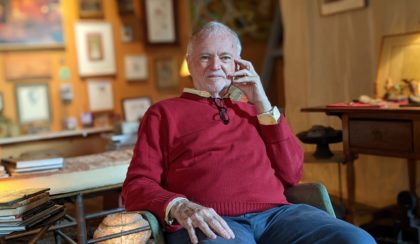
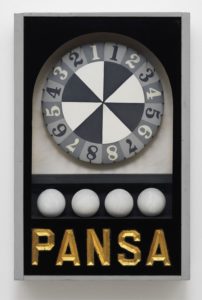
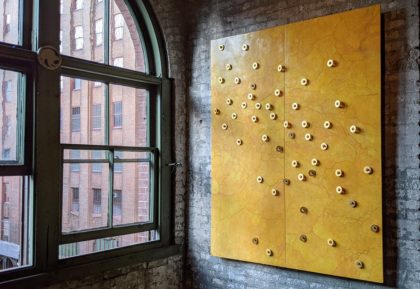
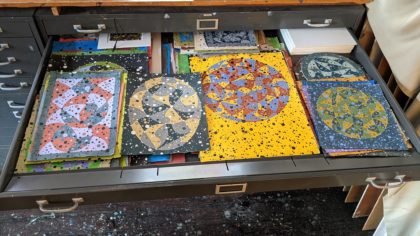
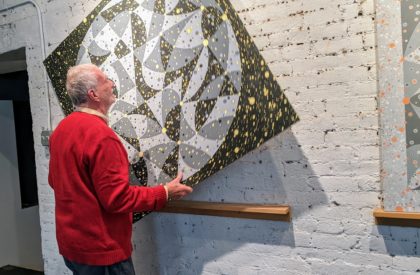
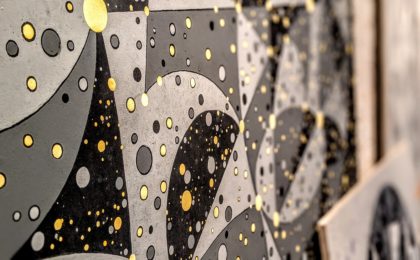
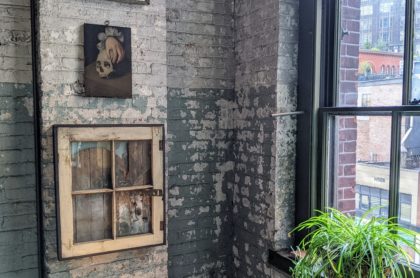

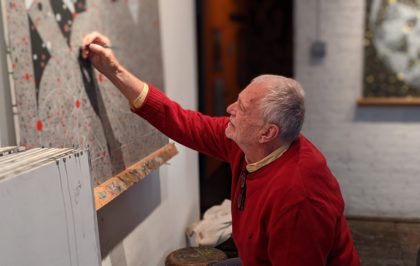








Fantastic and congratulations John….. I remember you from a very long time ago!!!!!! very long Hugs
And here I am in 2025 just discovering this wonderful artist!
Hi John!
Still around (2025)….
my best to you,
Ken